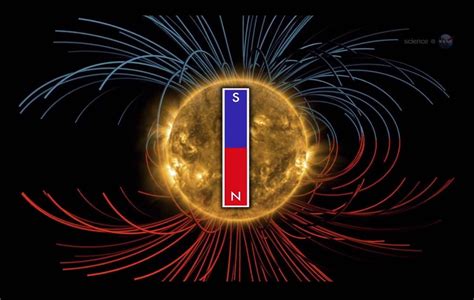The Sun, our consistent life-giving star, is on the brink of a dramatic transformation. The Sun’s magnetic field is set to flip its polarity, a phenomenon that happens every 11 years. This magnetic flip is a crucial component of the solar cycle, where the magnetic poles reverse their polarity, fundamentally altering the structure of the Sun’s magnetic field. The implications for Earth and the entire solar system are vast, raising questions about everything from cosmic ray deflection to potentially affecting global climate patterns.
One of the more beneficial side effects of this magnetic field reversal is how it influences **cosmic rays**—high-energy particles that reach Earth from outside our solar system. During a magnetic flip, the Sun’s magnetic field becomes more complex, offering additional shielding against those cosmic rays. Previously, *NASA* highlighted that this additional protection is particularly beneficial for astronauts in space, protecting them from harmful radiation. This added defensive layer could be seen as a celestial umbrella, contributing to the safety of space missions and potentially extending the operational life of satellites and other space equipment.
However, the sunspot cycle associated with this magnetic flip is not without its risks. During the solar maximum, the period of greatest solar activity in the sunspot cycle, we can expect an increase in *solar flares* and *coronal mass ejections (CMEs)*. These solar flares can fiercely eject solar plasma with immense force, causing disruptions in Earth’s magnetosphere. A historical instance is the Carrington Event of 1859, which caused widespread telegraph system failures. Modern repercussions could be as severe as disrupting global communications, damaging power grids, and even affecting critical systems like GPS.
What’s fascinating is also the correlation some draw between solar activity and pandemics. The theory suggests that the oscillations in solar activity could somehow be linked to biotic factors on Earth. For instance, it’s posited that periods of solar minimum might coincide with pandemics, as referenced in numerous studies including one available on the National Center for Biotechnology Information (NCBI). While this might sound speculative, it does open up a discussion on how cosmic phenomena could have terrestrial health implications, albeit necessitating rigorous scientific validation.
This cyclical flip doesn’t occur rapidly; it takes place over several years, bringing a gradual shift in solar conditions. The *Hale cycle*, which spans 22 years, contains two 11-year sunspot cycles and provides a comprehensive view of these transformations. As our understanding deepens, the pattern reveals not just the immediate consequences but also the long-term effects on space weather, including the prediction and mitigation strategies for solar storms. While recent solar cycles have shown a trend of diminishing activity, the current cycle might be showing a slight rebound, hinting at the complex dynamics at play.
Our growing comprehension of the Sun’s behavior underscores a broader, philosophical reflection on humanity’s quest for understanding. The meticulous models developed by scientists to predict solar behavior reflect a convergence of observational astronomy, theoretical physics, and data science. Recent advancements in satellites and space telescopes offer unprecedented insights into our Sun, yet the elemental questions remain. We understand so much about solar processes and yet so little about the underlying mechanisms. This paradox embodies much of the scientific endeavor, where each answer only births further questions.
As this magnetic polarity shift unfolds, we find ourselves gazing at an ancient celestial dance that has continued for millennia. It invites curiosity and awe, reminding us of our place in the cosmos and the interconnectedness of all things celestial and terrestrial. Future research and space missions will undoubtedly provide more clarity on how these cosmic activities influence our planet and how we might better predict and protect ourselves from potential disruptions. For now, we continue to observe and learn, ever mindful of the Sun’s pivotal influence on our tiny blue dot.


Leave a Reply